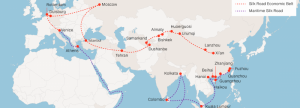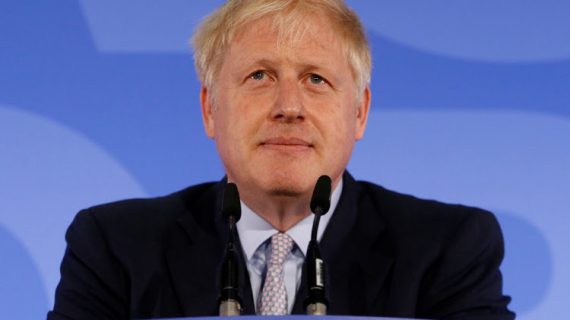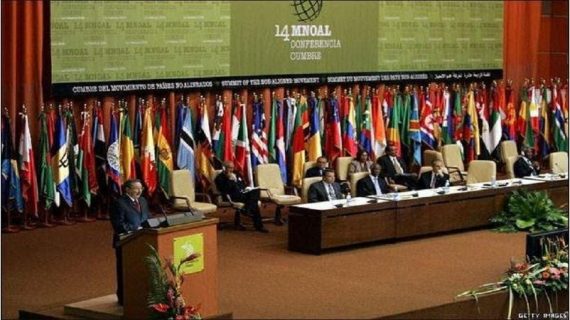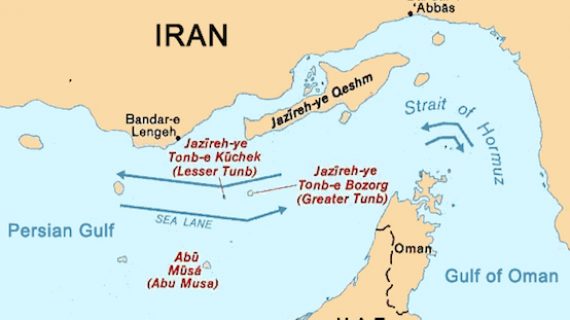China Sends New Freight Train Down to Iran
The Chinese train, carrying 1,150 ton of sunflower seeds, will travel 8,352 kilometers through Kazakhstan and Turkmenistan, arriving in Tehran in 15 days after it set off from Bayannur on Thursday
Reported by HPMM Group according to FINANCIAL TRIBUNE ; Afreight train service from Bayannur city in north China’s Inner Mongolia Autonomous Region to Tehran, Iran’s capital, was launched on Thursday morning.
“The train, carrying 1,150 tons of sunflower seeds, will travel 8,352 kilometers through Kazakhstan and Turkmenistan, arriving in Tehran in 15 days,” said Chen Bo, deputy manager of the Hohhot office of China Railway.
The new train route will shorten transportation time by at least 20 days compared with ocean shipping, Xinhuanet reported.
Bayannur is China’ biggest sunflower seed production hub. The city exports about 180,000 tons of sunflower seeds annually, with 90% of them headed for Middle Eastern, European and US markets.
Agricultural products from the city have been exported to more than 80 countries and regions, and its export volume has reached $420 million.
China-Iran Train Services
This is not the first time China is sending cargo trains to Iran.
The first-ever train traveling the long route from China to Iran set off from Yiwu City in China’s Zhejiang Province on January 31, 2016. It covered 10,399 km, passing through Kazakhstan and Turkmenistan, to reach the border station of Inche Borun after 14 days.
The second freight train departed from Yinchuan South Railway Station on Sept. 5, 2017, carrying some 560 tons of cargo, including mechanical equipment, ceramic tableware, crystalware and automobile accessories, worth around $1.6 million.
The third, fourth and fifth such cargo trains travelled the route in January 2018.
“We are planning to transit goods from China to Europe. The value of commodities exchanged between China and Europe stood at €۵۲۰ billion in 2016. We expect a part of these goods to be transited through Iran in the near future. The transit of goods generates two and a half times as much value added than just transporting them into the country,” deputy head of the Islamic Republic of Iran Railways, Mostafa Davoudi, told Financial Tribune in an interview.
Silk Road Revival
The route, better known as the New Silk Road, is a 2,300-km Chinese railroad that links Urumqi, the capital of China’s western Xinjiang Province, to the Iranian capital Tehran, connecting Kazakhstan, Kyrgyzstan, Uzbekistan and Turkmenistan along the way.
It was first proposed by He Huawu, the chief engineer of China Railway Corporation, in late 2015.
From Tehran, the grand project will join Iran’s East-West network leading to Turkey and East Europe. It could also open a way to Europe via a rail route linking southern Iranian ports to Azerbaijan and Europe.
The Belt and Road initiative, put forward in October 2013 by Chinese President Xi Jinping, includes several corridors through land and sea, including the New Silk Road rail route, which will serve as a tailwind for the transport of goods and energy between Iran and China.
Opportunity for China Amid US Sanctions
As US President Donald Trump hardens his confrontational attitude toward Tehran, tearing up the 2015 nuclear deal and calling for a new sanctions regime, China is more than ready to grab the opportunity for trade by opening a new international railroad connecting Tehran and Bayannur, Sputnik reported.
The exact route of the railroad is yet to be disclosed, as there are currently several major railroad projects, some of them even include China’s biggest regional rival, India.
However, considering Bayannur is located near the northern border of China and there’s already an international railroad to Kazakhstan there, it is likely that the new trade route goes through the territories of former Soviet republics Kazakhstan, Uzbekistan and Turkmenistan.
During a media briefing on Wednesday, Chinese Foreign Ministry spokesperson, Geng Shuang, said Iran and China would “maintain normal economic ties and trade”.
“We will continue with our normal and transparent practical cooperation with Iran on the basis of not violating our international obligations,” he said.
The Chinese experience in circumventing the earlier sanctions against Iran will come in handy with Beijing rejecting Trump’s renewed effort to reintroduce punitive economic measures, wrote The Globalist.
Iran’s Largest Trade Partner
The Islamic Republic of Iran Customs Administration’s latest report shows that China remains Iran’s top trading partner.
Iran’s non-oil trade with the East Asian country totaled $22.28 billion during the last fiscal year (ended March 20, 2018), indicating an increase of 16.82% compared to the year before, IRICA reported.
Iran exported 34.89 million tons of commodities worth $9.06 billion to China last year, down by 7.57% in tonnage and up by 8.31% in value year-on-year.
Apart from oil, major Iranian exports to China, in terms of value, include methanol, iron ore, ethylene glycol, liquefied propane and gas condensate.
Iran imported 4.80 million tons of Chinese goods worth $13.21 billion during the period under review, registering a rise of 7.92% and 22.91% in tonnage and value respectively YOY.
The country mainly imported auto parts, rail parts, and LCD & LED display modules and parts from China.







